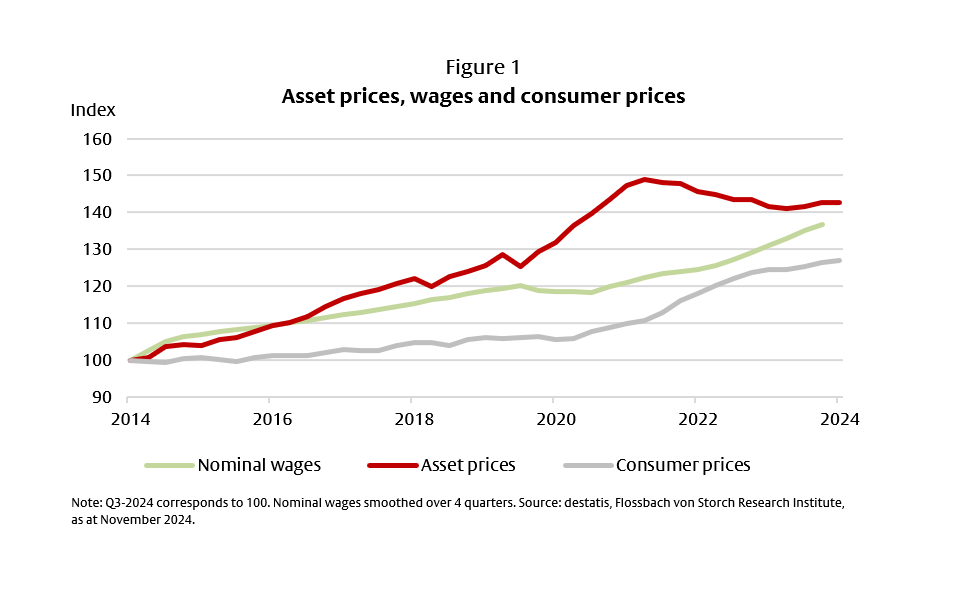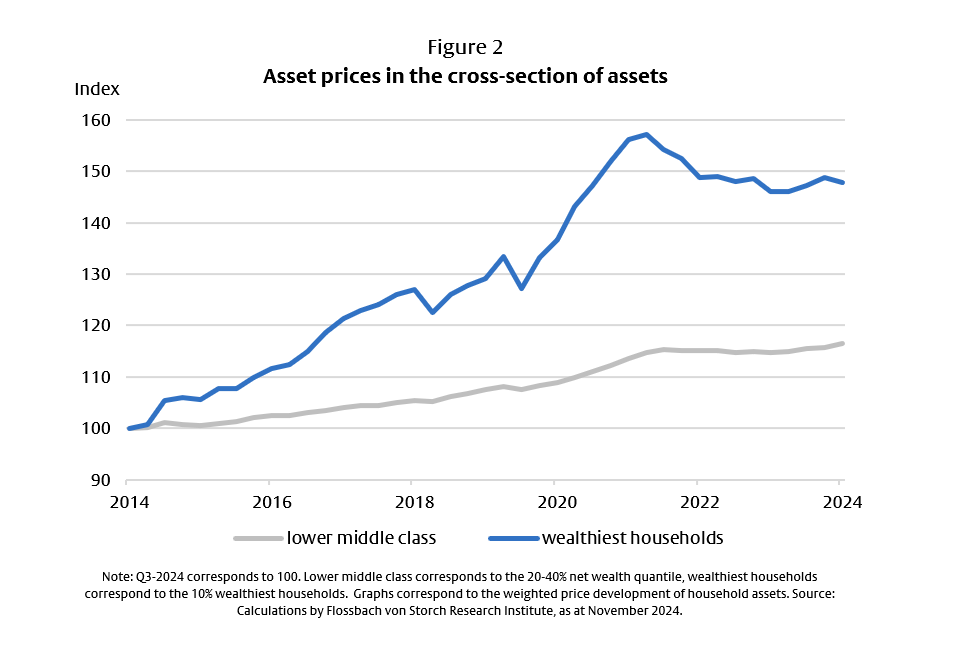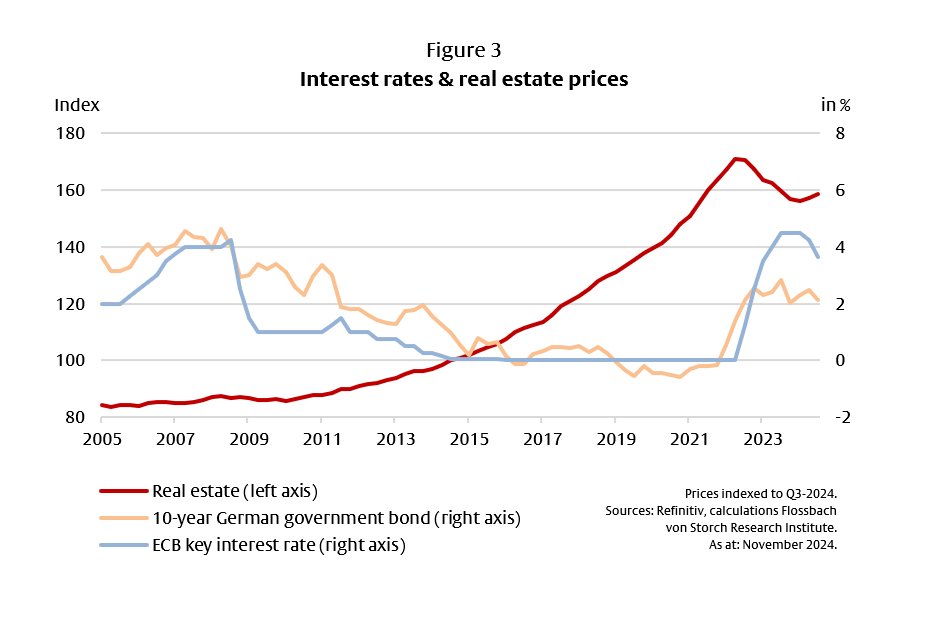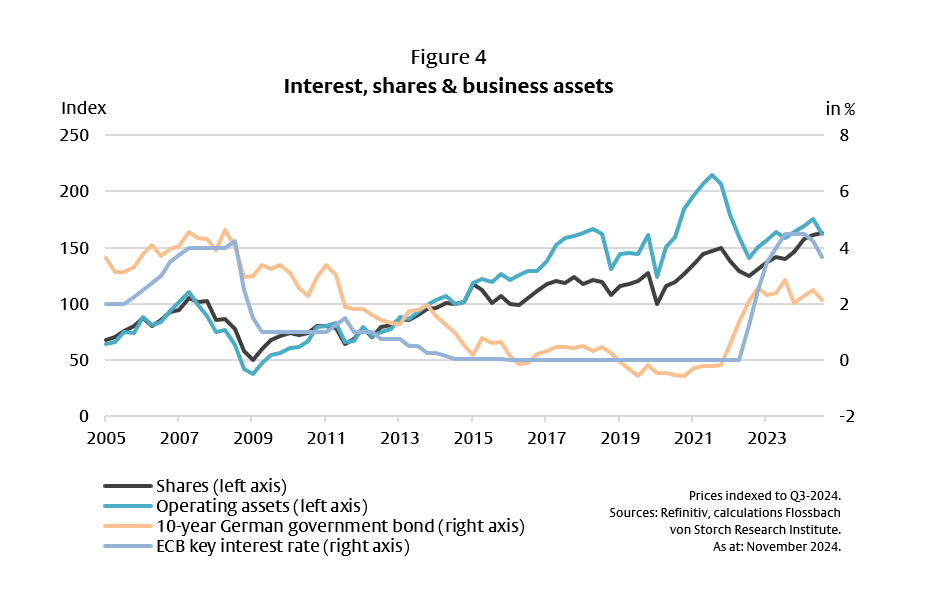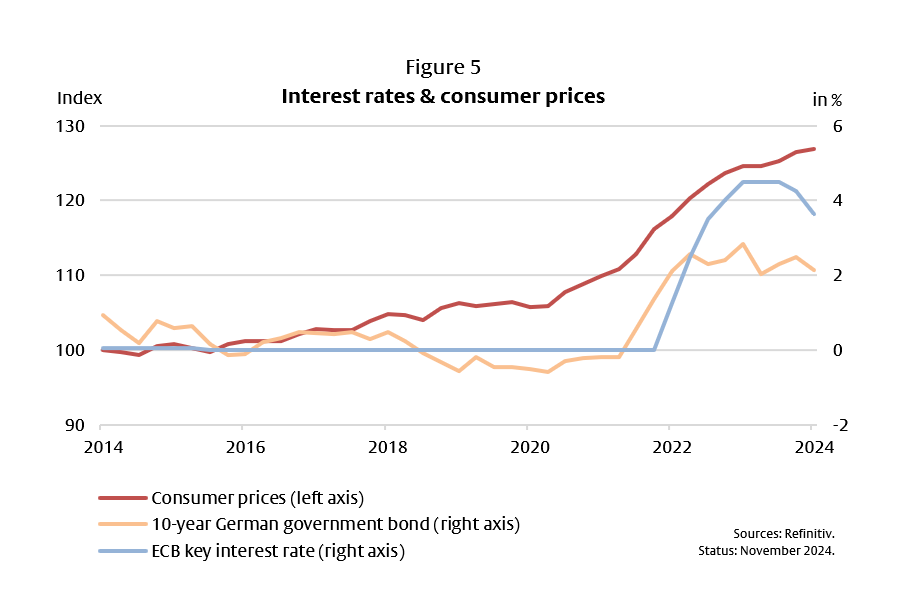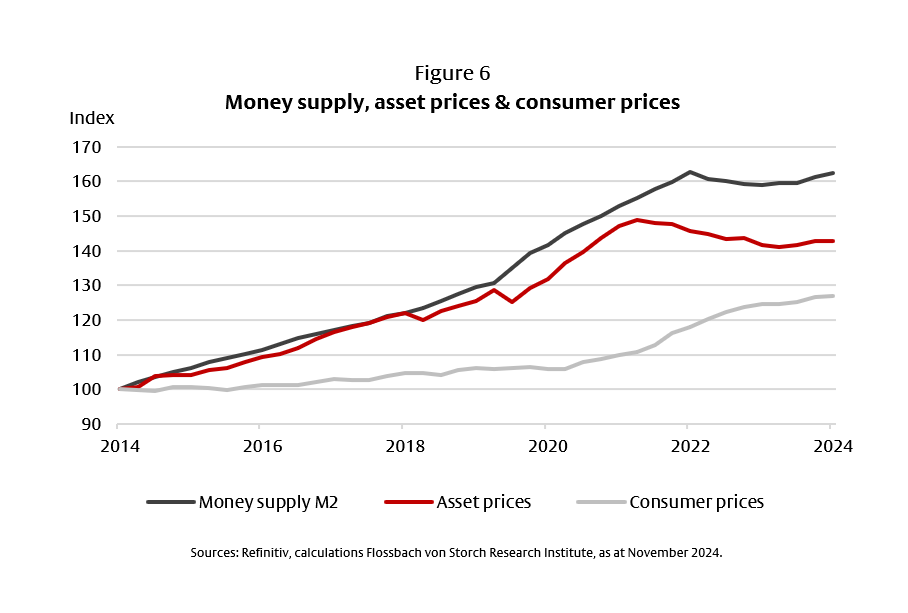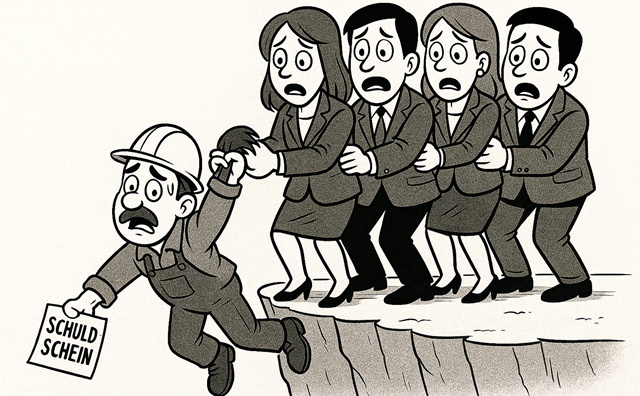It hid for seven quarters, but is now showing itself again. Asset price inflation is back. Assets, such as material and financial goods, have become more expensive again in Germany. The price increase is still tentative. Prices are one percent above the recent trough and still seven percent below the peak in 2022. Nevertheless, they could soon rise again significantly.
One man's joy, another man's sorrow
Asset price inflation is a double-edged sword. Shareholders, property owners or entrepreneurs can be happy about the rising prices of their assets. The assets can be sold at a higher price or provide greater collateral for a loan to make further purchases or investments.
However, anyone who has little or no assets or who parks their assets in savings books accounts will be hit hard by asset price inflation. If one wants to make provisions for old age, build up assets or even buy a property, one gets less for your hard-earned money. In the worst case, real estate has become so expensive that one can no longer afford it.
Over the past ten years, asset prices for private German households have risen by 43%, as can be seen in Figure 1. A household now has to spend considerably more than ten years ago to accumulate assets. At +30 %, the rise in nominal wages during this period cannot compensate for this. The increase in asset prices relative to nominal wages was particularly strong in the years 2018 to 2021.
The gap between wages and asset prices subsequently narrowed, which initially sounds like good news. However, consumer prices also rose significantly during this phase. Private households were therefore unable to invest in assets despite falling asset prices, as a larger proportion of their income was consumed by consumer goods.
The losers of asset price inflation are young households and households with a low level of assets or income, who only very rarely own real estate, their own business or a large share portfolio. Older households and households with a high level of assets, on the other hand, are the beneficiaries, as they can often call the corresponding assets their own.
The problem is revealed in the cross-section of private household wealth. Prices for the assets of wealthy households had risen steeply by 2021 (Figure 2). However, this price increase did not occur in the lower middle class. The reason lies in the composition of private wealth. Less affluent households have a higher proportion of their assets in the form of savings, which have not experienced a price increase. This has made it increasingly difficult for less wealthy households to invest in the goods of wealthier households and catch up with them.
How did asset price inflation come about?
The most important factor for asset prices in Germany is interest rates. Around 60 percent of private household assets are accounted for by real estate. In times of low interest rates, mortgage loans are cheap and boost demand for real estate. Figure 3 shows the development of real estate prices in Germany since 2005. During the period of low interest rates from 2009 to 2021, real estate prices rose enormously. Real estate only began to fall with a slight delay due to the rise in key and market interest rates in 2022. However, the price decline on the real estate markets was short-lived. And to the chagrin of prospective buyers, the costs of renovation and construction rose, so that the price decline was absorbed by the higher costs.
In addition to real estate prices, the prices of shares and business assets, which reflect the future earning power of companies, also reacted to the interest rate level. With low interest rates, the present value of future earnings is higher. Figure 4 shows how, after the financial crisis, there was a long rise in the prices of shares and business assets, which reached their temporary peak in 2021. For example, the price of business assets doubled from 2014 to 2021, although expected returns did not increase nearly as much. When interest rates finally rose again in 2021, the prices of shares and business assets fell. Due to the expectation of falling interest rates, prices rose again from the second half of 2022.
But what has shaped the recent movements in interest rates?
The recent fall in interest rates is closely linked to the development of consumer prices in the eurozone. In response to the rise in consumer prices at the end of 2021, fixed-income securities were increasingly sold off when their yield was below consumer price inflation. Figure 5 shows that interest rates on the bond markets rose in response to consumer price inflation. Similarly, central banks have raised key interest rates in the hope of curbing consumer price inflation. As consumer price inflation eased, the ECB cut interest rates in 2024. Interest rates also fell slightly on the bond markets.
And what has driven consumer prices?
The causes of consumer price inflation are complex, but the focus is on the ECB's monetary policy and the fiscal policy of governments in the eurozone. Since 2014, the ECB has massively expanded the money supply in the eurozone by cutting interest rates and buying bonds (Figure 6). As the newly created money circulated primarily on the financial and real estate markets, it did not increase consumer prices, but it did increase asset prices. Only when the coronavirus crisis set in and the states distributed additional newly created money directly to the population, while at the same time severely restricting consumption options, was there a slight delay before consumer price inflation rose significantly.
Ultimately, asset price inflation has its origins in monetary and fiscal policy. Even if the aim of cheap money and sharply rising government spending was to stabilize growth and employment, this was not without the side effect of asset price inflation. This has very unfair distributional effects that can contribute to political polarization.
As the ECB is currently expecting further interest rate cuts, asset prices are likely to rise further in the future. For many people, asset accumulation, retirement provision or even the home they have longed for will move further into the distance.
Legal notice
The information contained and opinions expressed in this document reflect the views of the author at the time of publication and are subject to change without prior notice. Forward-looking statements reflect the judgement and future expectations of the author. The opinions and expectations found in this document may differ from estimations found in other documents of Flossbach von Storch SE. The above information is provided for informational purposes only and without any obligation, whether contractual or otherwise. This document does not constitute an offer to sell, purchase or subscribe to securities or other assets. The information and estimates contained herein do not constitute investment advice or any other form of recommendation. All information has been compiled with care. However, no guarantee is given as to the accuracy and completeness of information and no liability is accepted. Past performance is not a reliable indicator of future performance. All authorial rights and other rights, titles and claims (including copyrights, brands, patents, intellectual property rights and other rights) to, for and from all the information in this publication are subject, without restriction, to the applicable provisions and property rights of the registered owners. You do not acquire any rights to the contents. Copyright for contents created and published by Flossbach von Storch SE remains solely with Flossbach von Storch SE. Such content may not be reproduced or used in full or in part without the written approval of Flossbach von Storch SE.
Reprinting or making the content publicly available – in particular by including it in third-party websites – together with reproduction on data storage devices of any kind requires the prior written consent of Flossbach von Storch SE.
© 2024 Flossbach von Storch. All rights reserved.

